Converting Prospects into Customers and Sales at Barcelona Tech City
It’s especially relevant for startups to get the most out of their resources, whether it’s time or money. The first gets achieved through achieving efficient processes and the second, when it comes to money, results from watching the customer conversion rate. It’s crucial to base a business’s growth on a 360° vision supported on a multichannel, multi-device platform aligned with your business model that meets your needs.
This is what I was talking about at the latest Barcelona Tech City event for the digital and technological ecosystem. I shared with the attendees what I believe are the keys for turning prospects into customers and sales.
A 360° vision for sustainable growth
Ever since the customer has become the center of every business, achieving a 360° vision of your customers is crucial. That’s why it’s vital you have updated information available to make decisions anywhere, at any time and to have complete control over your business from where you are to where you want to go and do it in the fastest, most efficient way to grow and exponentially scale.
How can we do it? First off, it's crucial we apply Inbound Marketing principles. Inbound Marketing is based on attracting customers with useful, relevant, value-adding client in each of the stages of the customer journey. With Inbound Marketing, potential customers will find your company through various channels such as blogs, search engines, and social media platforms. This way, we’ll be able to guide them towards making a purchase and gradually increase the customer conversion rate. To do so, however, we need the help of a Marketing Automation tool, like Salesforce’s Pardot software.
 As you’ll see later on, Marketing Automation lets you automate processes and more efficiently and accurately reach your uses. Salesforce’s Pardot, more specifically, is a marketing automation tool that has a wealth of functionalities: lead generation and qualification, landing page creation, A/B testing, real-time ROI measurement, and more.
As you’ll see later on, Marketing Automation lets you automate processes and more efficiently and accurately reach your uses. Salesforce’s Pardot, more specifically, is a marketing automation tool that has a wealth of functionalities: lead generation and qualification, landing page creation, A/B testing, real-time ROI measurement, and more.
Six steps for increasing your customer conversion rate
1. Create your buyer persona
If the customer’s in the center of your strategy, the first thing you should do is know them perfectly. Building off the typical buyer profile where we typically include just sociodemographic data, we have to create a document detailing your buyer persona’s needs and motivations. A buyer persona is data, while a buyer persona is a more in-depth analysis of your customer.
Here is an example of a buyer persona for a cybersecurity startup:
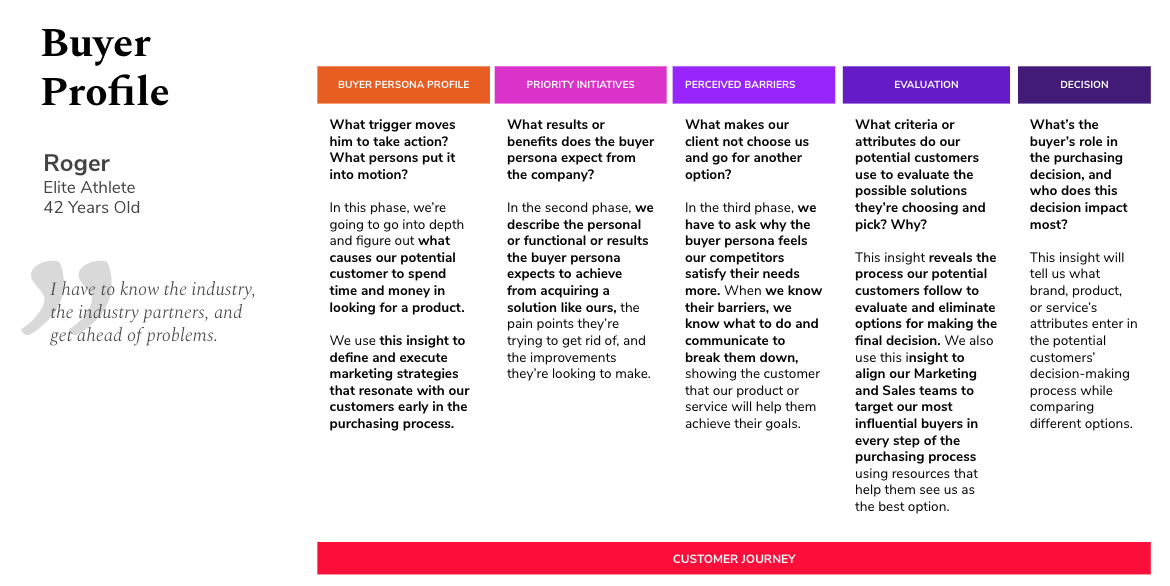
2. Define the customer journey
Also, analyze what the purchasing journey for your user is like and what could be motivating them at every moment. In Inbound, where interruptions generally don’t fit, we usually talk about three phases: discovery, consideration, and consideration. The buyer persona defines what they need in the first stage, they look for different options on the market in the second stage, and in the final stage, they make a decision and purchase.
Figure out what your positioning is going to be and what you’re going to offer the user in each stage. Remember that 90% of purchasing decisions are already made when the consumer has reached the decision stage.
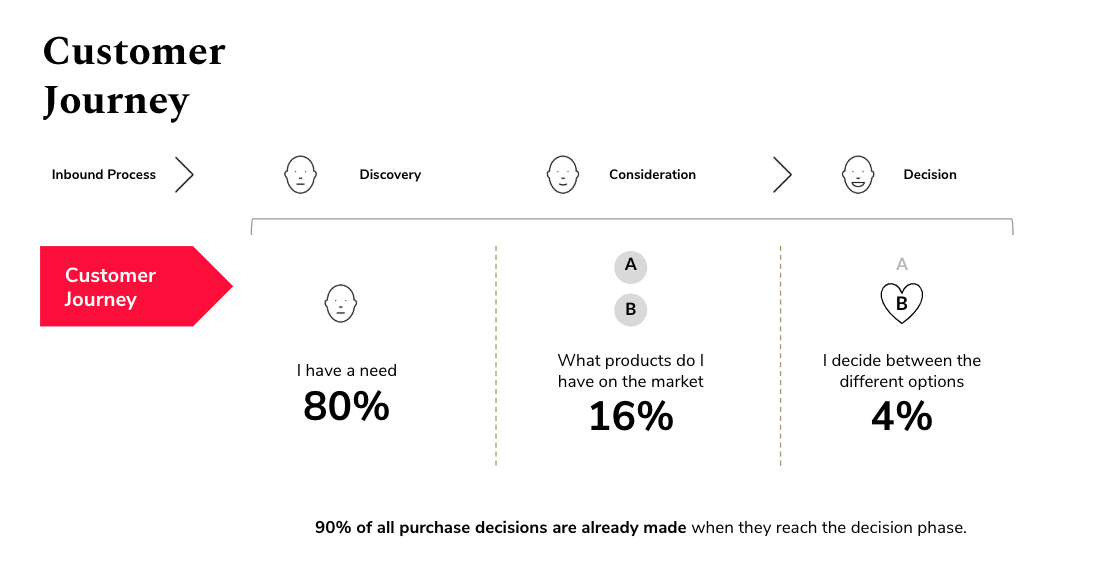
3. Carry out keyword research and create the appropriate content
As we've previously noted, Inbound Marketing's power comes from the useful content we offer to the user in the various stages of the customer journey. For us to achieve this effectiveness, we need to analyze the searches a user could perform in each step. Make a list of keywords for each part of the funnel and use them to create content.
What you want to achieve at the top of the funnel is to get users to visit your website or blog through more “general” content. If you want them to become leads, give them useful, quality content for them to download.
You should apply this content strategy in the different parts of the funnel to gather information about the user and guide them towards making a decision, where they’ll evaluate your product or service for making the purchase.
Take a look at this example for a hotel by hours:
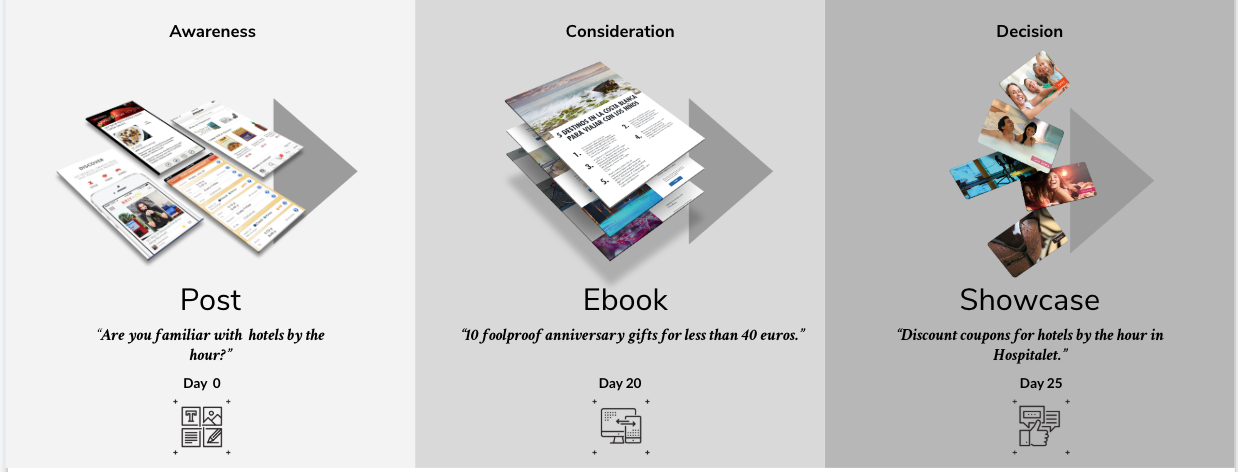
4. Nurture your leads with Marketing Automation tools
Lead nurturing consists of establishing a series of automated actions with the user that will vary based on what moment of the customer journey the leads are in.
We'll need to establish a lead scoring and lead grading system to deploy lead nurturing effectively.
5. Evaluate every lead with lead scoring and lead grading
Lead scoring consists of qualifying a database’s leads in terms of their proximity to the buyer persona and their interactions with the company. We base scoring qualifications on the implicit actions a user has completed (pages visited, completed forms, etc.) that our tool has recorded.
In lead grading, we base our qualifications on the specific information we have about the lead such as the industry, role, company size, etc.
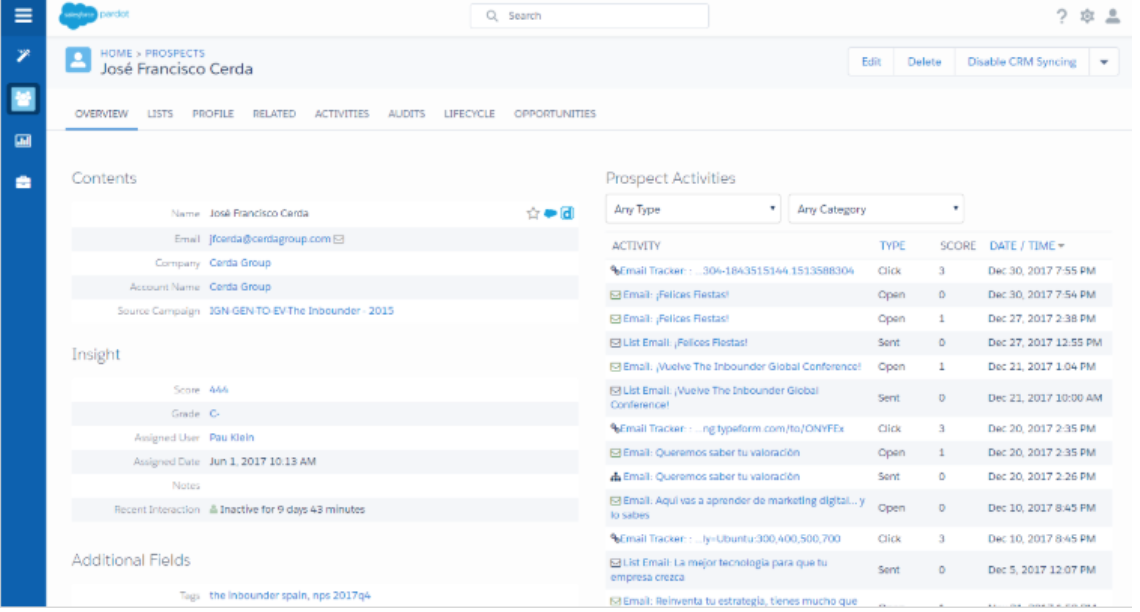
If the scoring numbers indicated how interested or committed a potential customer is with the company, the grading numbers indicate how interested or committed the company is in the potential customer.
Therefore:
- Scoring: Implicit information= numerical value representing the lead’s activity and engagement.
- Grading: Explicit information = quickly identify if potential customers are truly qualified leads.
6. Work hand-in-hand with your Sales team
When a lead reaches the previously-defined grading and scoring, we classify it as an MQL (Marketing Qualified Lead); meaning that this lead is of interest to us and we should move forward.
This is the point where the marketing department's work ends and where the sales team moves into action. We know we have an exciting candidate in our hands, so the sales experts should be the ones who seal the deal.
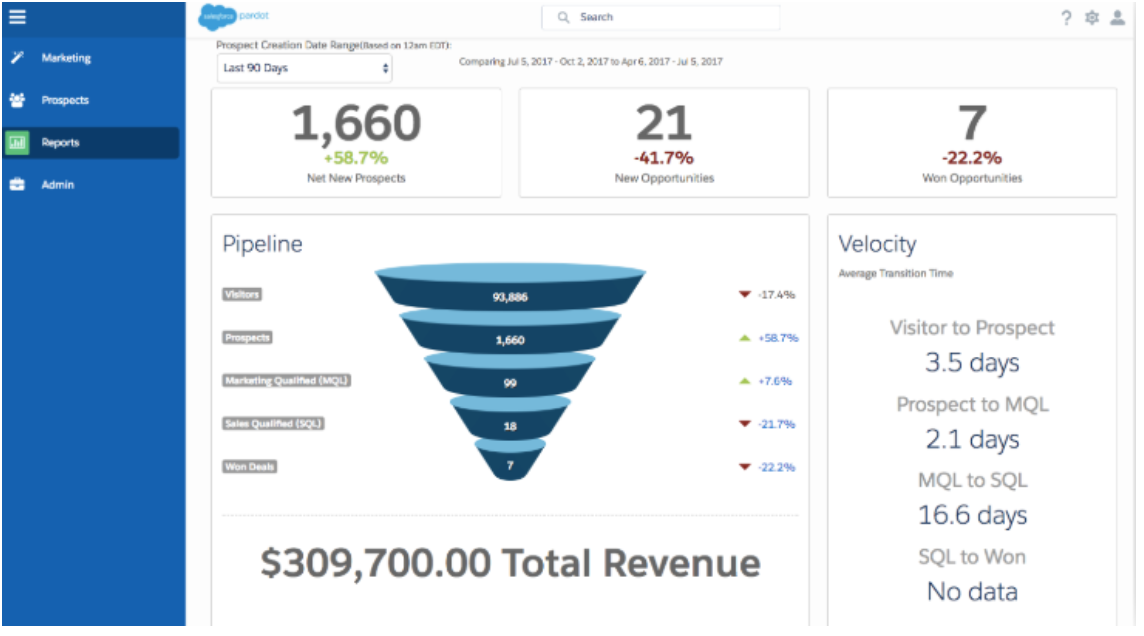
Consider that the chances of contact with a lead being satisfactory are 100 times higher if we contact the lead within five minutes, compared to, for example. In the professional services industry, the chances of converting a lead fall by half after the first 24 hours.
Salesforce’s CRM, for example, lets you automatically carry out the entire nurturing, grading, and scoring process, and as a final step, send the information directly to the sales team.
The results of a conversion to sales campaign
This methodology will bring you results in the first year of implementation. We'll be able to see increases in:
- Lead Acquisition.
- More moves from Lead to Opportunity.
- Sales.
If you want to see more concrete details and examples, you can take a look at how our Salesforce solutions can help you start to implement this strategy and make your business grow.
Subscribe to our newsletter and stay up to date with the latest digital trends.
Subscribe to our newsletter and stay up to date with the latest digital trends.
No thanks. My inbox is fine as it is.